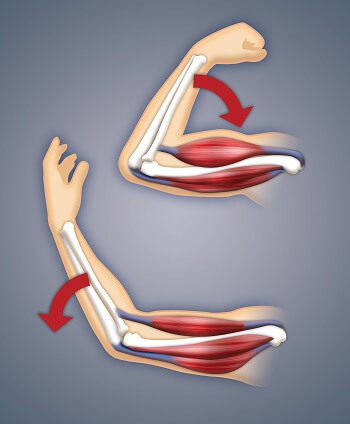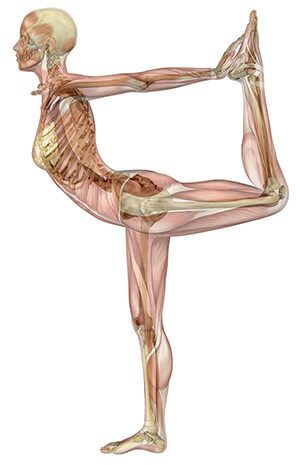This is a lesson summary. The full lesson can be viewed by purchasing an online course subscription.
Learning Objective
In this lesson we will learn about the musculoskeletal system in humans.
Learning Outcomes
By the end of this lesson you will be able to:
- Discuss the overall function of the musculoskeletal system.
- Describe the different types of muscles that make up the muscular system.
- Differentiate between the axial skeleton and the appendicular skeleton.
- Describe the structure and function of bones, including compact bone and spongy bone.
- Describe cartilage, ligaments and tendons.
- Discuss the different types of joints, including the type of the tissue involved and the degree of movement allowed, with examples.

(Image: dissoid, Adobe Stock)
Lesson Summary
- The musculoskeletal system incorporates the muscular system and the skeletal system.
- It consists of skeletal muscles, bones, cartilage, ligaments, tendons and joints.
- The main function of the musculoskeletal system is to support and move the body.
- The muscular system consists of three types of muscles:
- Skeletal muscles – muscles that are attached to bones and are involved in voluntary movements.
- Smooth muscles – muscles that are attached to organs and are involved in involuntary movements.
- Cardiac muscles – specialised muscles that enable the heart to beat continuously.
- Muscle cells are long and can contract and expand.
- The skeletal system includes the axial skeleton and the appendicular skeleton.
- The axial skeleton protects internal organs.
- It includes the skull, backbone, ribs and sternum.
- The appendicular skeleton moves the body.
- It includes the shoulder blades, pelvis, arms, legs, hands and feet.
- The skeletal system consists of:
- Bones – rigid, slightly elastic tissues that form the internal frame of the body.
- Cartilage – firm, rubber-like tissue that provides padding for bones and is a structural component of the nose, ears, ribcage, trachea and bronchi.
- Ligaments – fibrous connective tissue that connects bones.
- Bones function to support, move and protect the body, as well as producing blood cells (in bone marrow) and storing minerals.
- Bones consist of living tissues as well as a matrix of proteins and minerals – namely collagen and calcium phosphate.
- The two main types of bone tissue are:
- Compact bone – harder and more dense tissue making up the outer section of bones.
- Spongy bone – softer and less dense tissue making up the inner section of bones.
- Tendons are fibrous connective tissues that connect skeletal muscles to bones.
- When muscles contract, tendons act on bones, causing movement around a joint.
- A joint (articulation) is a region where two or more bones are connected.
- Joint types include:
- Fibrous joints – contain tough, fibrous tissue between bones, allowing little or no movement.
- Cartilaginous joints – contain cartilage between bones, allowing some movement.
- Synovial joints – contain a fibrous, fluid-filled cavity between bones, allowing free movement.
- Synovial joints include hinge joints, ball-and-socket joints, saddle joints and pivot joints.

(Image: AlienCat, Adobe Stock)
(Header image: AlienCat, Adobe Stock)
